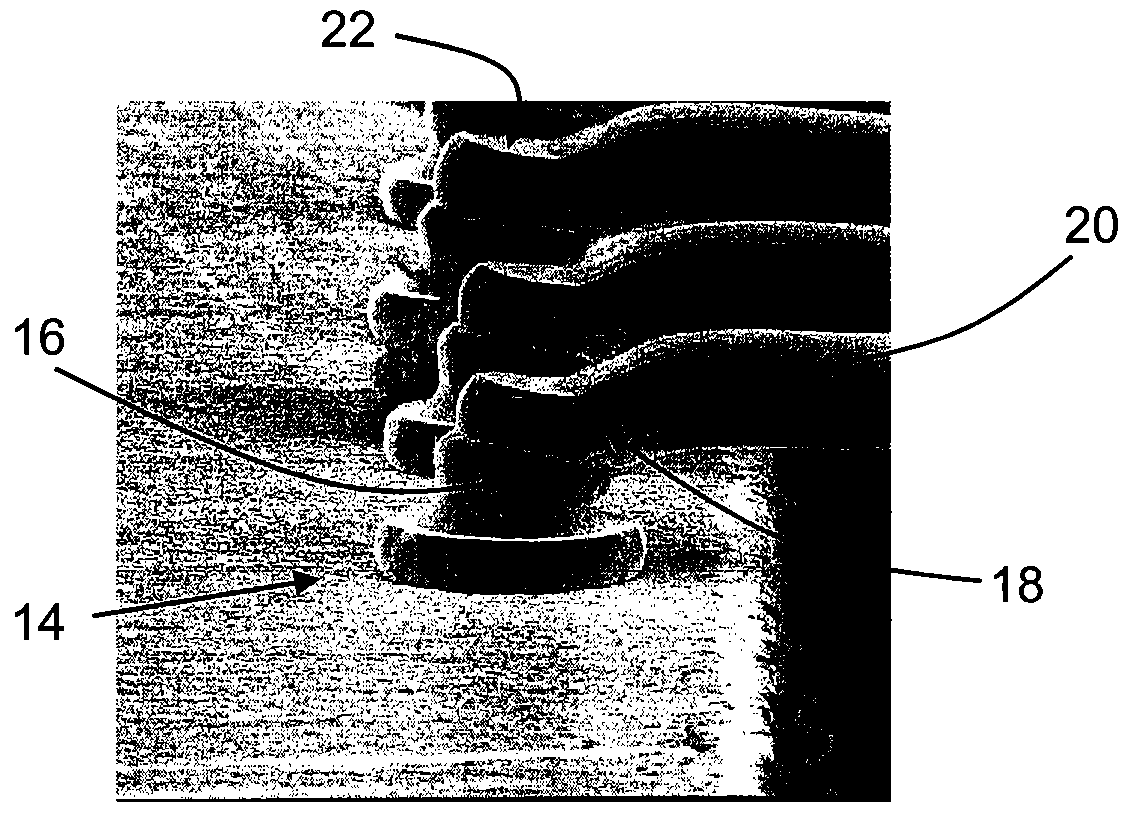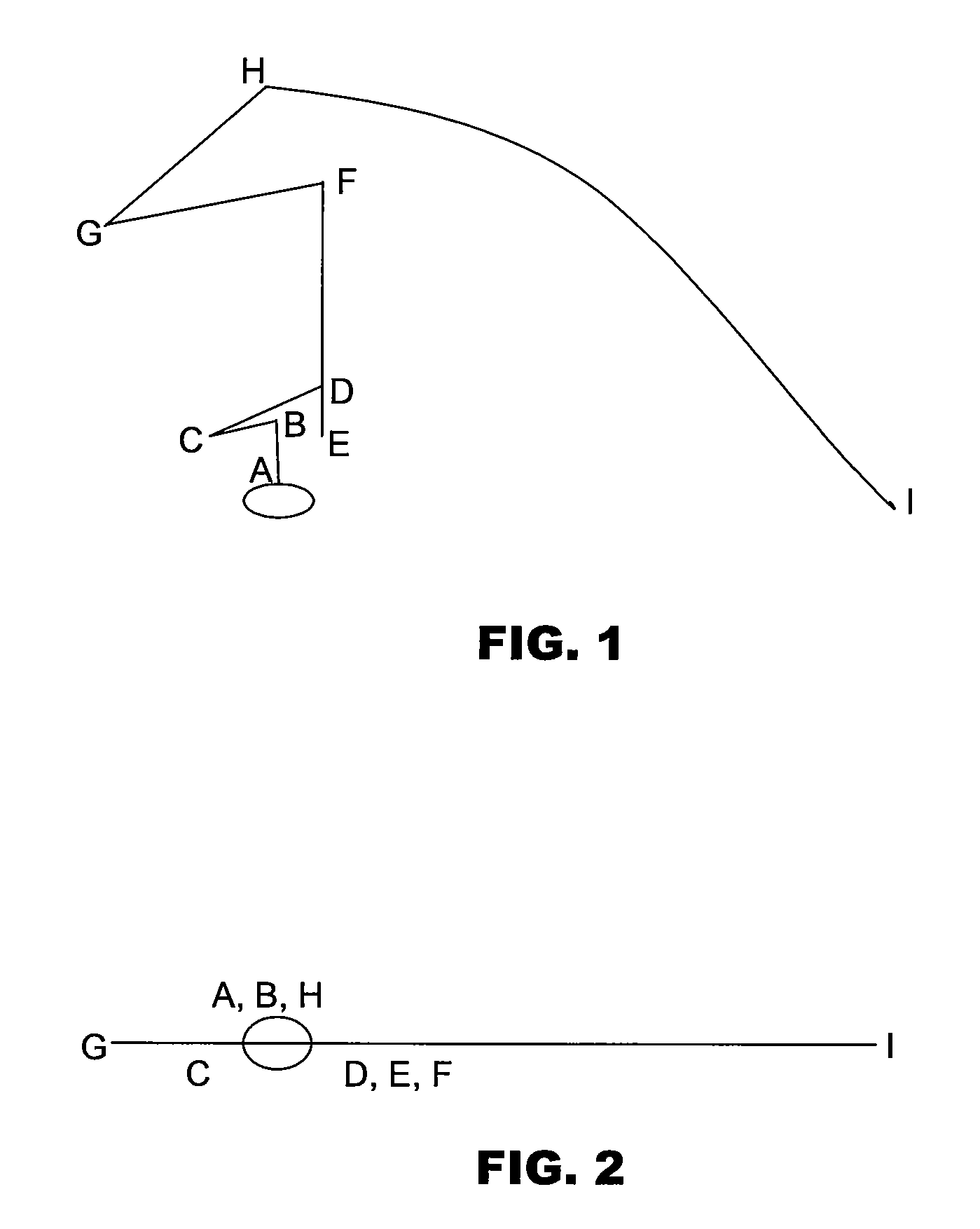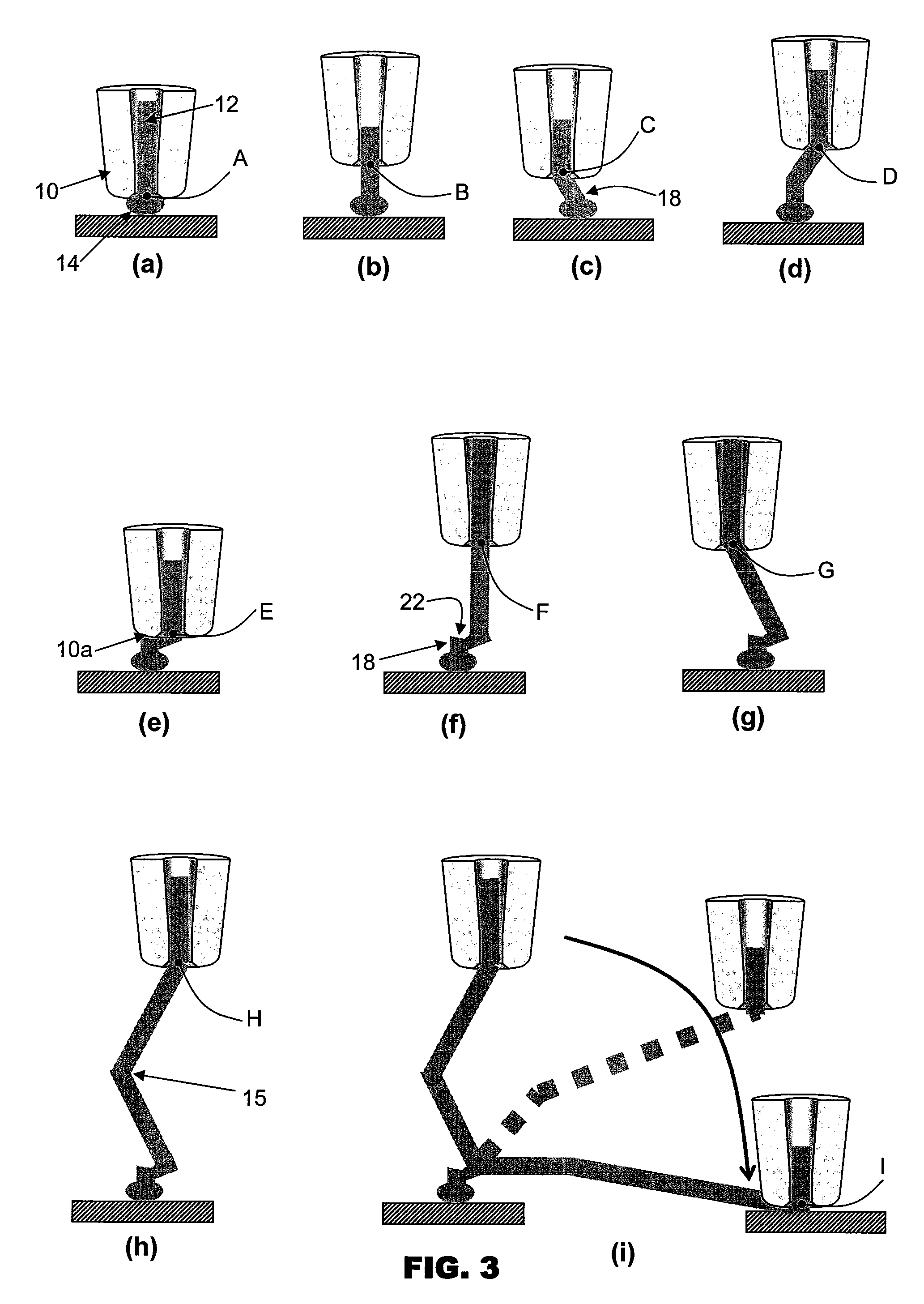Wire bonding method for forming low-loop profiles
a wire loop and profile technology, applied in the direction of auxillary welding devices, soldering devices, semiconductor/solid-state device details, etc., can solve the problems of weak strength of the neck portion of the wire bond, weakened adhesion between the ball bond and the bonding surface, and more susceptible to neck cracks and breakag
- Summary
- Abstract
- Description
- Claims
- Application Information
AI Technical Summary
Benefits of technology
Problems solved by technology
Method used
Image
Examples
Embodiment Construction
[0017]FIG. 1 is side view of a loop motion profile of a wire bonding tool 10 employing a wire bonding method according to the preferred embodiment of the invention. FIGS. 3(a) to 3(i) are diagrammatic illustrations showing the shapes of a bonding wire 12 at different positions of a bonding tool 10 during loop formation
[0018]The bonding tool, such as a capillary 10, is used to feed bonding wire 12 to bond the wire between a first bonding position A and a second bonding position I. A ball bond 14 is first made at the first bonding position A. The capillary 10 is then moved substantially vertically upwards away from the first bond 14 to point B.
[0019]At point B, the capillary 10 is moved in a reverse motion diagonally downwards and in a direction away from a second bonding position I to point C. This reverse motion forms a neck portion 18 at the top of the ball bond 14 and bends the wire 12. From point C, the capillary 10 is moved diagonally upwards to point D towards the direction of ...
PUM
| Property | Measurement | Unit |
|---|---|---|
| circumference | aaaaa | aaaaa |
| height | aaaaa | aaaaa |
| ultrasonic energy | aaaaa | aaaaa |
Abstract
Description
Claims
Application Information
 Login to View More
Login to View More - R&D
- Intellectual Property
- Life Sciences
- Materials
- Tech Scout
- Unparalleled Data Quality
- Higher Quality Content
- 60% Fewer Hallucinations
Browse by: Latest US Patents, China's latest patents, Technical Efficacy Thesaurus, Application Domain, Technology Topic, Popular Technical Reports.
© 2025 PatSnap. All rights reserved.Legal|Privacy policy|Modern Slavery Act Transparency Statement|Sitemap|About US| Contact US: help@patsnap.com



